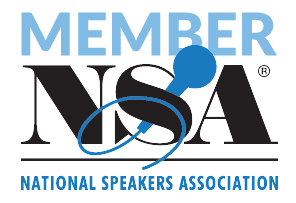 When I worked as a staff nurse, there were times when I was treated poorly by a patient prompting me to file an incident report but honestly, it was so complicated that I justified not doing it. Like, a patient who was not cognitively intact scratching me when I was trying to turn her or getting hit while trying to restrain an intoxicated patient. Justifying their behavior coupled with a complicated reporting system led me to avoid reporting it. Rinse and repeat with millions of nurses. This is why if you truly want to reduce patient abuse, you must make reporting easier.
When I worked as a staff nurse, there were times when I was treated poorly by a patient prompting me to file an incident report but honestly, it was so complicated that I justified not doing it. Like, a patient who was not cognitively intact scratching me when I was trying to turn her or getting hit while trying to restrain an intoxicated patient. Justifying their behavior coupled with a complicated reporting system led me to avoid reporting it. Rinse and repeat with millions of nurses. This is why if you truly want to reduce patient abuse, you must make reporting easier.
This article is the last in our series of articles focused on reducing patient abuse in healthcare. We started with how to intervene early and then shared our best strategies to warn others so that they don’t become victims of workplace violence.
Addressing Abuse from Patients by Intervening Early
How to Reduce Patient Abuse by Warning Others
How is Patient Abuse Reported?
Typically, when an employee is on the receiving end of patient or family abuse, they are instructed to report it. This means, they tell the charge or manager; may have to contact security depending on the severity of the situation, report it to the attending physician or hospitalist, and then before the end of their shift, fill out the dreaded incident report. The incident report alone can take an additional 20 minutes to complete.
If your employee gets pushed by a patient who either isn’t cognitively intact, is under the influence of alcohol or drugs, or was just told they have cancer, trust me, you will find a “reason” not to report it if you have to go through hoops to do so.
That’s why organizations must make reporting easier if they want to reduce patient abuse.
Why is Reporting Patient Abuse Important?
The reason that reporting is so important is that it not only takes care of that situation and provides a better understanding of what happened, but it’s also a call for help in terms of what safety measures organizations need to do in the future. For example, if patient violence occurs more frequently during a period when a patient is told they have cancer, perhaps you could have a social worker or counselor be present or offer additional support during the period of time after.
Even though organizations are required to report incidence of workplace violence, that doesn’t mean they will.
Knowledge is power but if you don’t know abuse is happening, you can’t intervene.
Here are a few practical tips to make reporting easy!
-
Informal
There needs to be some type of informal way to report a patient becoming increasingly disruptive. And that needs to be to ONE person – not 27. Because if something happens and your employee has to report it to 27 different people, guess what? They’re not going to do it. Just a simple “This just happened…,” to ONE point of contact.
Our recommendation is for it to be the charge nurse, or someone who’s in a coordinator role in your department. Like a phone tree, that point of contact knows to contact the manager, then their primary physician/provider, then security, etc. The goal is to make it easy for that one person to make an informal “hey – this just happened” which will alert someone to turn it into a formal system.
-
Formal
If you ask your employees to report every single act of verbal or physical abuse, you are going to find yourself not getting any reports. That’s a fact. You must make it easy on them. You have to start small. Get your team together and ask them to name the behaviors that they would consider abusive from patients and families. How do they show up? Behaviors like, “they hit me,” or “they curse at me,” or “they point their fingers at me.” Have them write down every single way a patient or their family member can be abusive. You can have them write them on Post-It Notes. Put the Post-Its on the wall and ask each department to just pick the top 3 behaviors that they all agree will be formally reported. Start with 3 and then build it from there.
Also, utilize your resources! There are some organizations that actually use nurses who have retired, or who are part time or light duty, that will virtually help staff report. They will call or video chat with the employee, ask them questions, and type everything into their incident reporting system.
-
Acronym – APRAISER
This acronym will not only help you be concrete and behaviorally specific in your reporting, but it will also make it easy!
Appearance – What did the patient look like? Unbathed? Disheveled? Very upset? Mildly?
Perception – Was your perception that they were “out of control”? Rambling?
Risks – What risks did you experience? “Afraid the patient was going to stab you with a pen.”
Actions – What did you DO? “I started backing away.” “I moved toward the patient.”
Insights – “I believe this patient needs psychiatric consult.”
Said – Document what they said in as much detail as possible. Word for word.
Emotions – Theirs: Passive-aggressive. Rambling. Yours: “I was fearful.”
Results – What happened: “I left the room.” “I called for help.”
Reducing patient abuse is possible when you know how it’s showing up. By making reporting easier, your employees will be less likely to justify someone’s behavior and more likely to report it.












